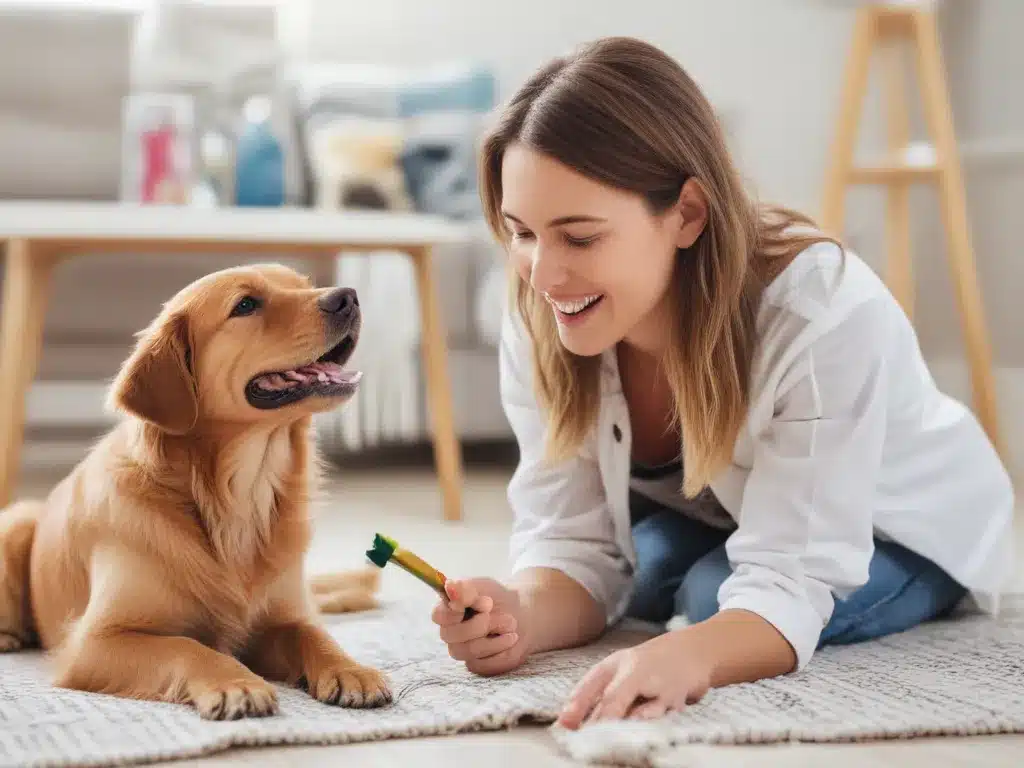Introduction
As a pet owner, I understand the joy and companionship that furry friends bring into our lives. However, along with the love and laughter, comes the responsibility of maintaining a clean and hygienic environment for both our pets and ourselves. Pets can inadvertently bring dirt, hair, and even germs into our homes, making it crucial to establish good pet hygiene practices. In this comprehensive guide, I will delve into various aspects of pet hygiene, covering grooming, cleaning, and training techniques to help you maintain a clean and healthy living space.
The Importance of Pet Grooming
Regular grooming is essential for maintaining your pet’s overall health and well-being. It not only keeps their coat clean and shiny but also helps prevent skin irritations, matting, and the accumulation of dirt and debris. Here are some key grooming practices to incorporate into your routine:
Brushing
Brushing your pet’s fur is a fundamental aspect of grooming. It removes loose hair, dirt, and dander, preventing it from spreading throughout your home. Depending on your pet’s breed and coat type, you may need to brush them daily, weekly, or monthly. Invest in a high-quality brush or comb designed specifically for your pet’s coat.
Bathing
Regular bathing is crucial for keeping your pet clean and fresh-smelling. However, over-bathing can strip their coat of natural oils, leading to dry skin and irritation. Follow the recommended bathing schedule for your pet’s breed and consult with your veterinarian or groomer for the best practices.
Nail Trimming
Overgrown nails can cause discomfort and potential damage to your floors and furniture. Regularly trimming your pet’s nails is essential for their comfort and the preservation of your home’s surfaces. If you’re uncomfortable trimming their nails yourself, seek the services of a professional groomer.
Maintaining a Clean Living Space
In addition to grooming your pet, it’s equally important to keep your living space clean and free from pet-related messes. Here are some effective strategies:
Vacuuming and Sweeping
Regular vacuuming and sweeping are crucial for removing pet hair, dander, and any dirt or debris your pet may have brought in from outside. Invest in a high-quality vacuum cleaner designed for pet hair and consider using attachments specifically designed for pet hair removal.
Furniture and Carpet Cleaning
Pets can leave behind stains, odors, and hair on your furniture and carpets. Regular professional cleaning or spot-cleaning with pet-safe products can help maintain the cleanliness and freshness of your upholstery and carpets.
Litter Box Maintenance
If you have a cat, proper litter box maintenance is essential for preventing odors and keeping your home clean. Scoop the litter box daily, and change the litter regularly. Consider using clumping litter and odor-controlling products to minimize smells.
Training for Good Pet Hygiene
Proper training can help reinforce good hygiene habits in your pets and prevent unwanted behaviors that can lead to messes or damage in your home. Here are some training tips to consider:
Potty Training
Potty training your pet is crucial for preventing accidents and keeping your home clean. Consistency, positive reinforcement, and patience are key to successful potty training.
Chewing and Scratching Prevention
Chewing and scratching can lead to damaged furniture and floors. Provide your pet with appropriate chew toys and scratching posts, and train them to use these designated areas.
Obedience Training
Basic obedience training can help your pet understand and follow commands, such as “off” or “leave it,” which can prevent them from jumping on furniture or getting into areas they shouldn’t.
Real-Life Examples and Interviews
To further illustrate the importance of good pet hygiene, let’s explore some real-life examples and insights from pet owners and professionals:
Case Study: The Jones Family
The Jones family adopted a puppy named Buddy, and initially struggled with keeping their home clean. After implementing regular grooming, vacuuming, and training routines, they noticed a significant improvement in their living environment. “Buddy’s shedding and accidents were a real challenge at first,” said Mrs. Jones. “But once we established a consistent grooming and training schedule, it became much easier to maintain a clean and welcoming home.”
Expert Insight: Veterinarian Dr. Sarah Wilson
“Good pet hygiene is not only essential for maintaining a clean home but also plays a crucial role in your pet’s overall health and well-being,” says Dr. Sarah Wilson, a veterinarian with over 10 years of experience. “Regular grooming, proper nutrition, and a clean living environment can help prevent skin conditions, infections, and other health issues in pets.”
Conclusion
Teaching good pet hygiene is a win-win situation – it ensures a clean and comfortable living space for you and your family while promoting the health and well-being of your furry companions. By incorporating regular grooming, cleaning, and training practices, you can enjoy the joy of pet ownership without compromising on cleanliness. Remember, consistency and patience are key when establishing these routines. With dedication and the right approach, you can create a harmonious environment where you and your pets can thrive together.







